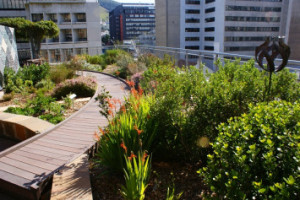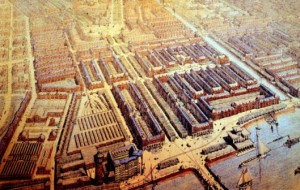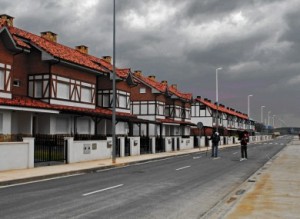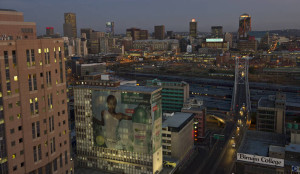Karla Booysen – Serious About Green Roofs: Are Cape Town And Durban Serious?
futurecapetown.com. July 2014. The previous part of the “Serious about Green Roofs” series investigated four international green roof case studies. I identified four key lessons that we can learn from these cases to help with creating our own green roof industry. Now we can take a look at two national case studies as a comparison. The only incentive towards green roofs in South Africa is a sustainability rating tool called the Green Building Council’s Green Star SA Credits. This voluntary system was inspired by the 2002 Australian Green Star tool and has been in effect since 2007. The tool awards up to one hundred credits to a development based on specific sustainability criteria. A green roof has the potential to earn twenty four of these credits. Compared to other international sustainability rating tools the Green Star SA Credits is the least effective in incentivising a high level of sustainability. Even with the lack of policies and incentives the following case studies will show the various potentials for the introduction of a green roof industry.
Cape Town, South Africa:
Cape Town’s Management of Urban Stormwater Impacts Policy (2009) mentions Water Sensitive Urban Design (WSUD) which provides an opportunity for green roofs to be absorbed into the policy. The policy defines this type of design as practises that encourage biodiversity, amenity and aesthetics. Furthermore it is stated that the City may introduce incentives to encourage these types of design. The City has also published a Cape Town Smart Building Handbook (2012) within which a pilot garden roof developed on a city building features as an example. Other than these documents there are a few other projects in the area that show support for green roofs.
Read more: http://futurecapetown.com/what-green-roof-incentives
The Amsterdam School: A New Model For Living
municipaldreams.wordpress.com, July 2014. In the previous post, I looked at the Amsterdam School’s early work in the north of the city where Michel de Klerk laid a radical blueprint for a new kind of working-class housing at Het Schip, an experimental building that emphasised the communal and worked to socialist ideals. Here I will look at Plan Zuid, town planner Hendrik Petrus Berlage’s rebuilding of south Amsterdam from 1917 where the Amsterdam School’s philosophy was writ large in a grand slum clearance project.
Plan Zuid levelled south Amsterdam to be rebuilt on Berlage’s principles. Avenues are bordered by estates of Amsterdam School social housing. Parks, squares and shops punctuate every street. The city’s mid-rise density is maintained, as is a sense of space that echoes the old canal ring. The broad Amstelkanaal cuts through from east to west, crossed with bridges built by the Amsterdam School.
They are flanked by sculptures by Hildo Krop, which chillingly show a late Expressionist style that would later be adopted by Nazi Germany. This is unfair, as Krop took pains to represent his city’s status as an international port with figures representing the Negro, the Chinaman and the Eskimo – dated now, but progressive at the time.
Read more: http://municipaldreams.wordpress.com/the-amsterdam-school
Spain Has Ghost Estates Too And Jobless Families Are Starting To Squat In Them
thejournal.ie. July 2014. Unable to pay her mortgage, Manoli Herrera turned over her flat to the bank and moved into one of six abandoned buildings occupied by other jobless families in Sanlucar de Barrameda, a seaside town on Spain´s southern coast.
“I did not want my two children to experience the violence of an eviction. They have already gone through so much,” she said as her children played in the courtyard of the occupied building.
Twenty struggling families, many with children, moved into the building on 30 June. Several days later another 60 families moved into five nearby buildings.
The six new buildings belong to a real estate developer that went bankrupt and disappeared.
A message written on a white bedsheet that hangs from the courtyard of one of the occupied reads: “Everyone has the right to a home. Fighting for a home.”
Read more: http://www.thejournal.ie/spain-housing-bubble
Chris Boyko – Misunderstanding Density: Why We Are Building The Wrong Sort Of Cities
guardian.com. July 2014. For such a scientific-sounding word, “density” sure is emotive. Utter it to Nimbys and you might get four-letter expletives. Mention a place like Hong Kong, and eyes glaze over at the thought of mile-high walls of people, packed in like sardines. Density still even brings to mind Englishcities during the industrial revolution, full of open sewers and cholera.
With so much riding on an ability to create and develop successful cities worldwide, are we making sure they are places we want to live in? That’s the real crux – if we don’t understand what good density looks like, and what the impact of bad density is on people’s long-term health and wellbeing, then we don’t have a working basis for current and future developments.
At a spatial level, density is all about the concentration of things in an area. Most local authorities, as well as the ONS, collect information about things they can readily count, such as the density of houses and people. With these two figures, along with other kinds of information, such as brownfield availability and where certain services are located, cities make decisions about how land is used, how it is described and what future uses might be needed.
Read more: http://www.theguardian.com/cities-density-building
Marelise van der Merwe – Analysis: Africa’s Cities, Crying Out For Re-Imagination
dailymaverick.com. July 2014. Africa is second only to Asia in its number of city dwellers, and its cities are growing at an unprecedented rate. Yet understanding of African cities is lagging behind their development. Locally, it’s a massive challenge to build a knowledge base that will support the building of more equitable African cities, making them livable, accessible, and sustainable for all. By MARELISE VAN DER MERWE.
Last week, during the budget debates, Human Settlements minister Lindiwe Sisulu admitted that the delivery of housing in all South African provinces was a massive problem and that it had “dropped drastically”. As Rebecca Davis wrote, “The problem, in crude terms, is that too many people are moving to South African cities, and there isn’t enough land available for them. ‘We are ill-equipped to deal with this rate of urbanisation”, Sisulu said, though she promised 1,5 million homes over the next five years.’”
But, say some academics, migration is not the primary problem. Cities are actually expanding from within – and even without the influence of migration, the rate of urbanisation across the whole of Africa is posing a significant challenge to policy makers, governments and researchers alike. And it’s not only a South African problem. Urbanisation in Africa is one of the fastest-growing fields of study, and stakeholders are working overtime to try to build a critical mass of workable knowledge to combat inequality in the continent’s cities.
Read more: http://www.dailymaverick.co.za/analysis-africas-cities-crying-out
Are City Centre Apartment Towers The “Slums Of The Future”?
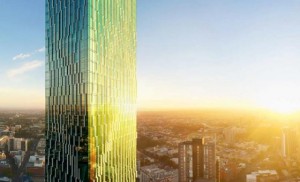
Is this proposed building destined to be a slum? Victoria One – recently approved apartment building in Melbourne. 629 apartments, 75 storeys. Architect: Elenberg Fraser
theurbanist. July 2014. One of the most persistent and widespread criticisms of city centre apartment towers is they’ll inevitably be “the slums of tomorrow”. But does the claim hold up on closer examination?
Melbourne’s hot apartment market means the city is the focus of claims that all those high-rise apartment towers in the CBD will be the slums of the future.
These sorts of dire predictions are made on social media, or sometimes by journalists like Fairfax associate editor Shane Green in this oped on the weekend. But here’s the Lord Mayor of the City of Melbourne, Robert Doyle, two weeks ago: …you don’t want to be left with housing stock in 10 years that no one wants … You don’t want to be building the slums of tomorrow.
The idea of “slums in the sky” is highly charged and emotive. I haven’t seen anyone question the proposition before but it’s the sort of “end of all discussion” statement that really warrants close scrutiny.
Slums can be described in a number of ways, but two key attributes are the low economic capacity of residents and run-down buildings and infrastructure.
Read more: http://theurbanist/towers-the-slums-of-the-future/
